In 2015 a violent earthquake shook Nepal, killing thousands across the country. In its wake, climbing teams at Mt Everest were hit by a deadly avalanche that destroyed Base Camp and caused the deaths of nearly 20 people. Anthea Fisher was there and recalls the avalanche and the aftermath for Eyewitness producer Justin Gregory.
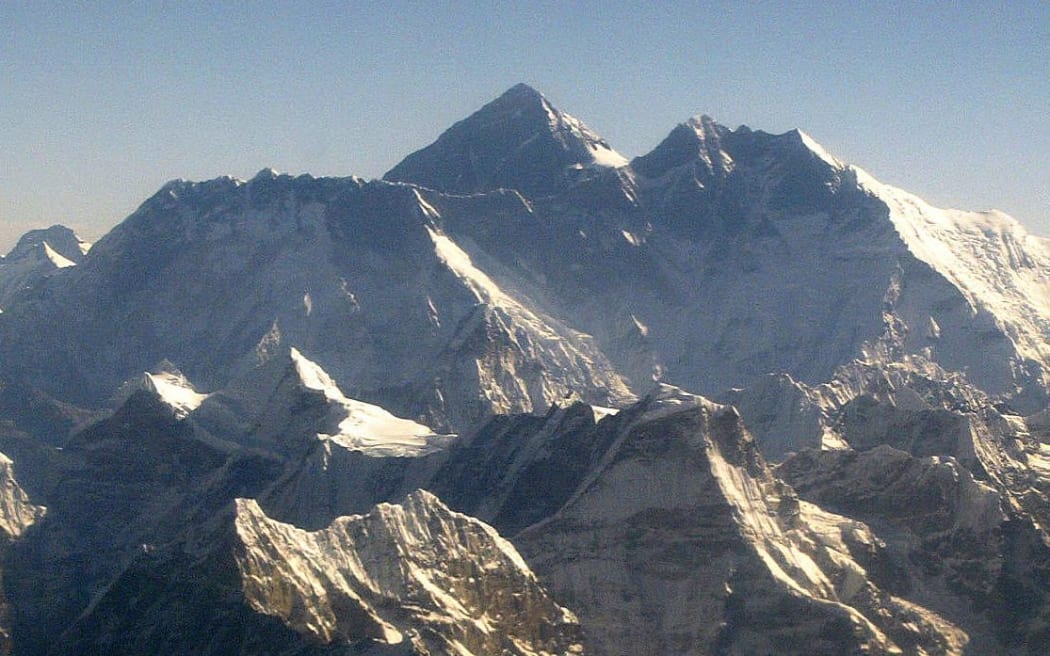
An aerial view of Mt Everest (centre). Photo: AFP (2003 - file)
The day of 25 April 2015 began early for Everest Base Camp manager Anthea Fisher. Back home in New Zealand it was ANZAC Day, but high in the Himalayas, Anthea was thinking only of her job.
The Wanaka resident was working for Kiwi mountain guiding company Adventure Consultants and this was her first time on the highest mountain in the world.
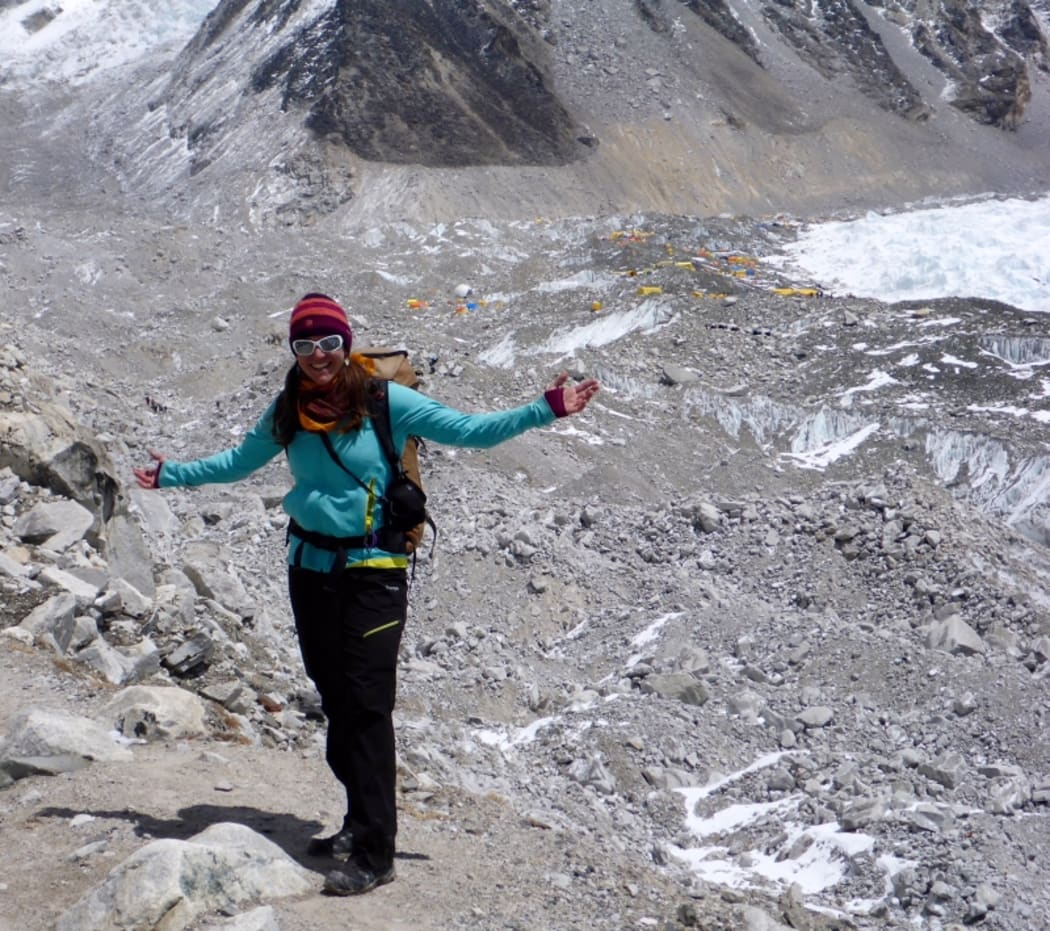
Anthea Fisher at Everest Base Camp at the start of the 2015 climbing season. Photo: Mark Ayre
The team had been at Base Camp for about three weeks and Anthea had got up that morning, while it was still dark, to see off her climbers as they began their first trek up to Camp 1. With most of her colleagues and clients away, she was enjoying the relative peace and quiet of a nearly empty base camp.
"I was actually having a little late morning nap."
“Just because I could! Because I knew I wouldn’t be disturbed by questions or having to organise anything.”
"So I was in my tent when the earthquake struck."
The 7.8 magnitude earthquake hit at 11.56am and lasted for 50 seconds. The epicentre was near the Kathmandu valley, just 160kms northwest of Everest.
But while the shaking was over in less than a minute, the real danger to Anthea and others at Base Camp was about to begin. An ice cliff between the Pumori, Lingtren and Khumbutse mountains above them had collapsed, causing huge chunks of ice to fall hundreds of metres to the valley floor below.
"It sounded like the valley was falling down around us."
The force of the ice cliffs collapsing shattered the rocks beneath them. The resulting avalanche was a deadly mix of snow, ice and razor-sharp shards of broken rock - and it hit Base Camp within seconds.
"You could actually see the avalanche heading towards us. It was like an explosion. I wasn’t sure if I would survive."
Anthea took shelter in a large nearby tent, but had the presence of mind to stay in the doorway to avoid being suffocated as it collapsed under the pounding of rocks and snow.
Warning: this video contains language some people might find offensive.
"I remember thinking ‘I hope this stops soon because I don’t know how much longer I can take this for’."
Several large avalanches hit that day. One, in the nearby Langtang Valley, killed more than 300 people. Nepal’s capital, Kathmandu, was also hit hard.
When everything finally went quiet, a shaken Anthea crawled out of her tent to an entirely new reality.
"Our whole Base Camp had been completely obliterated. There was nothing left of it."
At least 19 people died and many were injured on the worst day in Everest’s climbing history. Among the dead were five Nepali staff working for Adventure Consultants; another later died of his injuries. One of the dead was a young Sherpa named Pemba. This was his first time on the mountain.
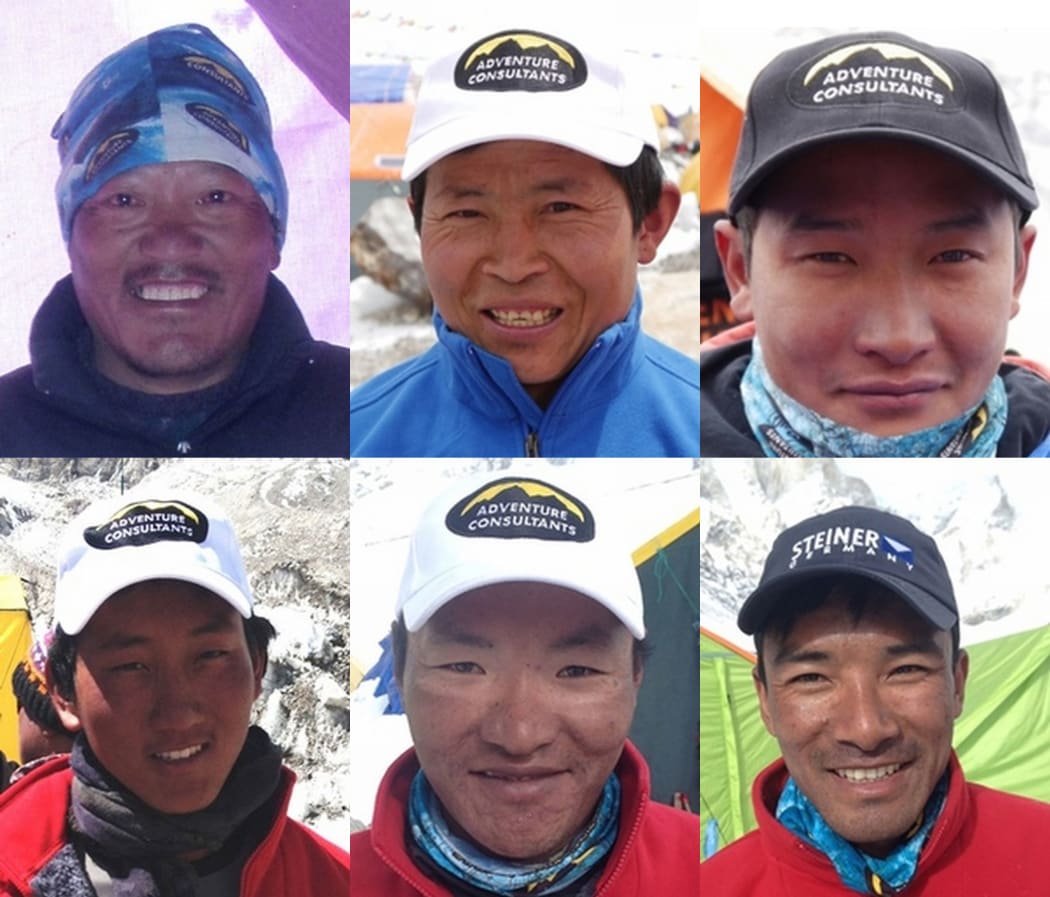
The six Nepali staff killed in the avalanche. Clockwise from top left: Jangbu Sherpa - Taksindu, Solukhumbu; Maila Rai - Khumjung; Dawa Tsering Sherpa - Chaurikharka; Chhimi Dawa Sherpa - Khiruale, Bung; Pema Yishi Sherpa - Khiraule, Bung; Pemba Sherpa - Taksindu, Solukhumbu Photo: Supplied / RNZ
The part of Base Camp where Adventure Consultants were set up took the brunt of the avalanche. They lost everything; tents, clothing, food and crucially, their medical equipment. Others nearby were luckier and immediately came to help. While doctors cared for the injured, others offered what they could.
“(They) would come up and say ‘do you need a toothbrush, do you need another pair of pants to wear, I’ve got some clean ones that will fit you.’”
Anthea managed to save a radio and put through a call to her team of climbers at Camp 1. She didn’t expect to get an answer.
“I thought that our whole team was gone. So it was a great relief when they answered the radio call. They’d gotten a small dusting from an avalanche but they were OK. I didn’t anticipate them asking how we were, so I didn’t have an answer ready.”
"I said something like ‘Base Camp has been obliterated. We expect mass casualties’."
Weather conditions were poor, so no rescue helicopters made it to Base Camp that day. Repeated aftershocks meant the ice cliffs above the camp continued to fall. As medical staff worked through the night to keep the injured alive, and as survivors tried to sleep, they were constantly aware of the threat of another avalanche.
"You could hear people crying."
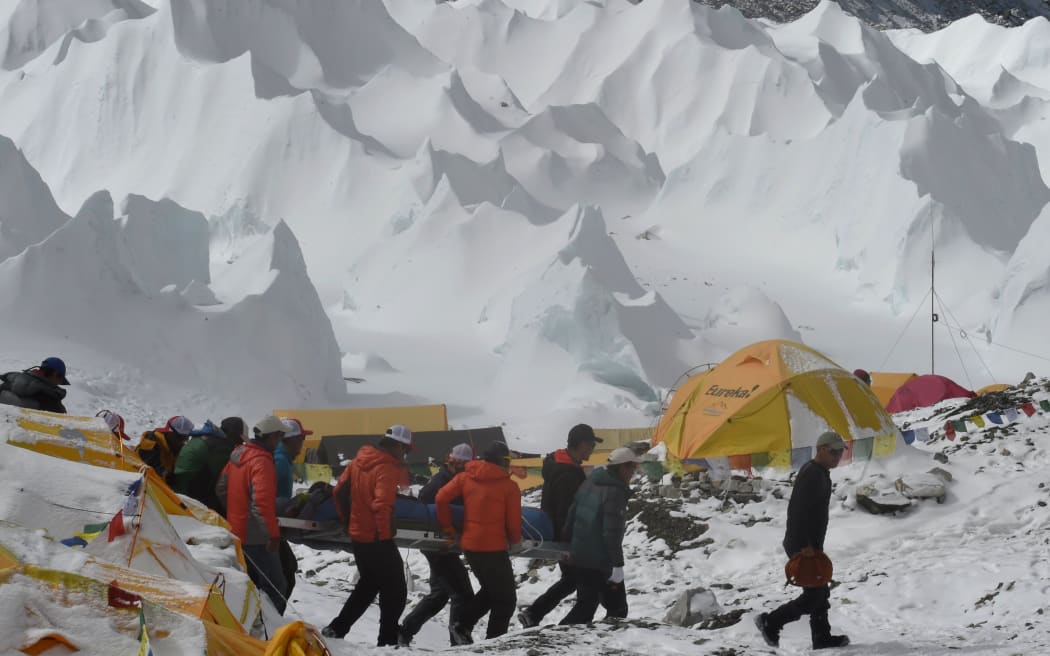
Rescue team personnel carry an injured person towards a waiting rescue helicopter at Everest Base Camp. Photo: AFP
The next day helicopters began to arrive to take off the injured and pick up climbers from Camp 1. The climbing season was cancelled and Anthea Fisher made her way home to New Zealand. Adventure Consultants set up a fund to educate the children of their dead and injured Nepalese staff and to rebuild the homes they had lost. After an emotional struggle, Anthea decided to return to Everest for the 2016 climbing season, in part to support the Sherpa who had signed up for that season.
'If they were willing to come back and embrace that risk again then I would stand next to them."
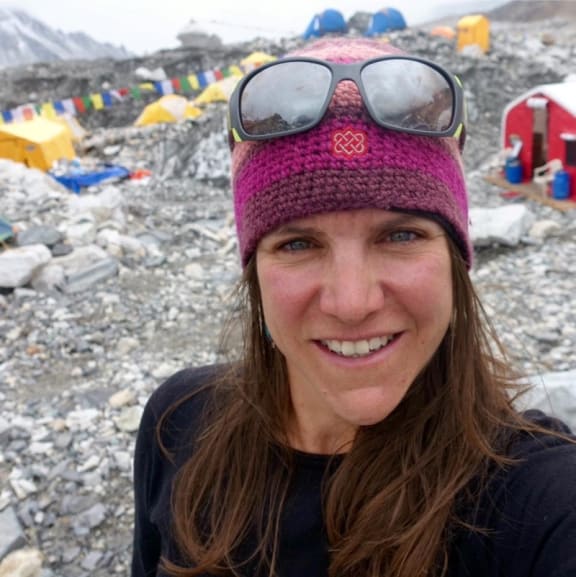
Anthea Fisher at Everest Base Camp in 2016. Photo: Anthea Fisher
Over 8000 people died in Nepal that day. More than 20,000 were injured and half a million homes destroyed. The earthquake was strong enough to literally move mountains, shifting Everest itself sideways by 3cm. A major aftershock the following month killed a further 200 people.
But the 2016 climbing season saw 600 successful summit attempts and only five deaths, which is considered a normal year on the mountain. Anthea enjoyed her second stint at Base Camp and when it was over, she went home happy - and alive.
This story was produced by Justin Gregory with additional audio from the BBC and video from Jost Kobusch. Click here to donate to the Sherpa Future Fund or go to adventureconsultants.com.
If you have stories you want us to tell, email us at eyewitness@radionz.co.nz.

